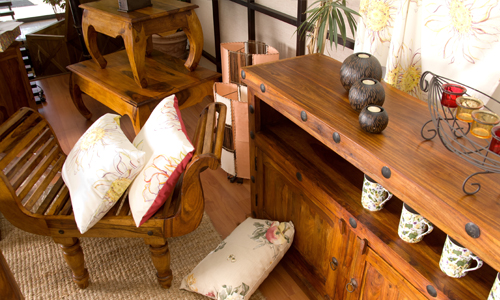
Reviving old wood with paint is an excellent way to breathe new life into tired and worn-out furniture or surfaces. With a little creativity and some basic techniques, you can transform drab and dated wood into a fresh, stylish, and attractive piece that complements your interior decor. Here are some techniques using wood paint finish to help you achieve this:
1. Cleaning and Prepping: Before starting any painting project, ensure the wood is clean and free from dust, grease, and grime. Use a mild detergent or a mixture of vinegar and water to clean the surface thoroughly. If the wood has an existing finish, lightly sand it to create a smooth surface for the new paint to adhere to.
2. Painting with Solid Colours: One of the simplest ways to revive old wood is by applying a fresh coat of paint in a solid colour. Choose a paint that suits your style and complements the room's aesthetics. Acrylic or latex paints are great choices for wood surfaces, as they are easy to work with and offer excellent coverage.
3. Distressing: For a vintage or rustic look, consider distressing the painted wood. After applying the base coat, use sandpaper to gently rub away some areas of the paint, particularly along edges and corners, to expose the wood beneath. This creates a charming, weathered appearance.
4. Layering and Glazing: Experiment with layering different paint colours to create depth and texture. Apply a base coat, let it dry, and then add a second colour on top. You can use a glaze to achieve a subtle translucent effect, giving the wood a more artistic and aged appearance.
5. Stencilling and Patterns: Introduce patterns and designs by using stencils. This technique allows you to add intricate details to the wood, such as floral motifs or geometric patterns. Stencilling can instantly elevate the visual appeal of an otherwise plain piece.
6. Whitewashing: Achieve a soft, muted look by whitewashing the wood. Dilute paint with water to create a translucent effect, allowing the wood's grain to show through. This technique imparts a lovely, coastal or farmhouse-style charm.
7. Colour Washing: Colour washing involves applying a diluted paint mixture over the wood, creating a soft, washed-out appearance. It adds subtle colour variations and a hint of texture while still highlighting the wood's natural beauty.
8. Sealing and Protecting: Once you're satisfied with the painted wood's appearance, apply a clear protective sealant to preserve the finish and ensure it stands the test of time. This step is essential, especially for furniture or surfaces that might be exposed to wear and tear.
Reviving old wood with paint allows you to unleash your creativity and customise pieces to suit your unique style. Whether you're going for a chic, contemporary look or a rustic, vintage vibe, these techniques using antique wood paint offer endless possibilities to breathe new life into old wood and make it a standout feature in your home decor.